Decorating with antique screens | A classic solution for contemporary living
There’s something striking about walking into a room and seeing an antique screen or folding room divider in pride of place. Once staples of palatial mansions and aristocratic boudoirs as a practical tool for modesty and spatial separation, these functionally decorative pieces are making a dramatic return – re-emerging as one of the most compelling 21st-century interior design trends.
As open-plan living continues to dominate living spaces and home design becomes more fluid, adaptable, and personal, antique screens are classic pieces that beautifully address modern-day interior design dilemmas.
At the Crown Collection interior décor store, our selection of antique wooden screens goes beyond mere functionality, infusing character, history, and functionality into every space.
From adding privacy to creating beautiful focal points, antique folding screens have a unique way of both separating and connecting areas in your home.
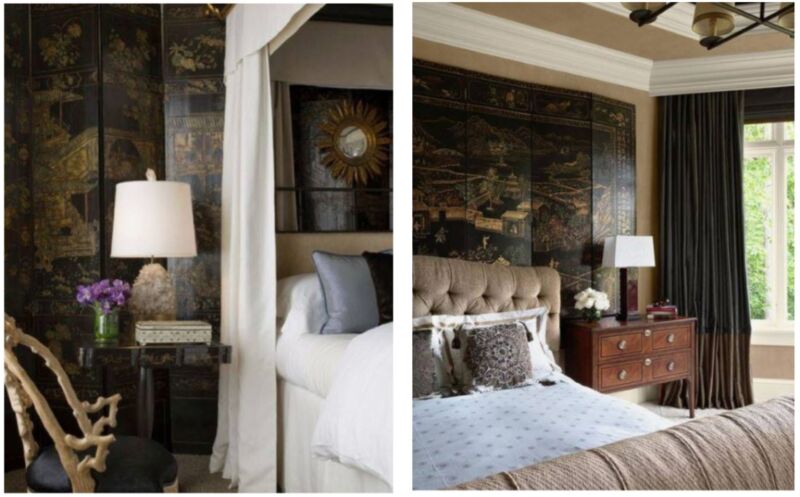
Here are just a few styles to consider:
- Chinese Folding Screens – Elegant, hand-painted with landscapes or calligraphy.
- Japanese Byōbu Screens – Minimalist, featuring natural themes and subtle colours
- French or Victorian Paravents – Rich in fabric, wood, and ornate detailing.
- Art Deco Screens – Bold, geometric, and glamorous.
- Colonial & Anglo-Indian Screens – Crafted from wood, cane, or bone inlay.
Let’s ‘unfold’ why antique screens are the ultimate solution for contemporary interiors.
‘Screen time’ | Redefining interior design priorities
So, what’s behind this comeback? At its core, it reflects how interior design has shifted over the last decade. Our homes are no longer static environments—they now need to accommodate remote work, self-care routines, virtual meetings, flexible family spaces, and more.
We want spaces that morph throughout the day, offering both privacy and openness. Antique wooden screens are visually stunning, incredibly versatile, and steeped in story.
They’re also conversation pieces, artistic installations, and a bridge between classical design and modern utility.
Instantly adding structure and personality to a space while solving layout issues in a non-permanent, elegant way, this fusion of form and function is what makes antique dividers so appealing in the 21st century.
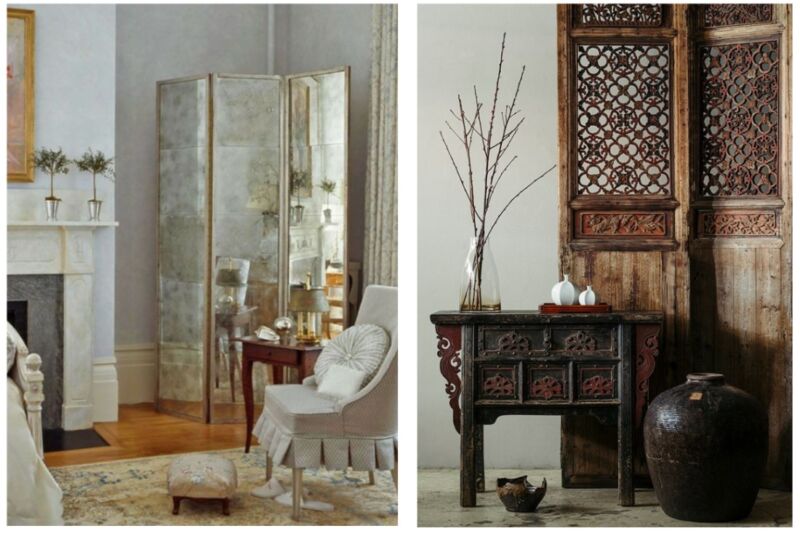
From East to West | A brief history of antique screens
Antique screens have a rich global heritage that blends functionality with artistic expression. Their journey through time shows just how adaptable and timeless they are.
- Ancient origins in China – Originating in the Han Dynasty (around 200 BCE), folding “pingfeng” screens were crafted from wood, silk, or paper and decorated with landscapes or calligraphy.
- Spread across Asia – Japan embraced them as “byōbu” screens, featuring seasonal artwork and folklore, used in tea houses and royal homes.
- Cultural symbols – In Asia, screens were spiritual, decorative, and passed down as heirlooms, crafted by skilled artists.
- Adoption in Europe – Arriving in the West in the 17th century, they became fashionable in France and England with designs evolving to include carved wood, velvet, and mother-of-pearl.
- Evolution through art movements – Screens adapted to Art Nouveau and Art Deco styles with bold patterns, stained glass, and metallic accents.

A clever solution for flexible living spaces
For most modern homeowners, the ability to create private, functional zones without knocking down walls has become the holy grail of interior design. And that’s exactly where antique screens step in—gracefully and cleverly solving modern space challenges.
These foldable, movable masterpieces – coming in a wide array of finishes – are like architectural chameleons, instantly carving out cosy, purposeful spaces while defining and refining an intimate studio apartment or a sprawling suburban home.
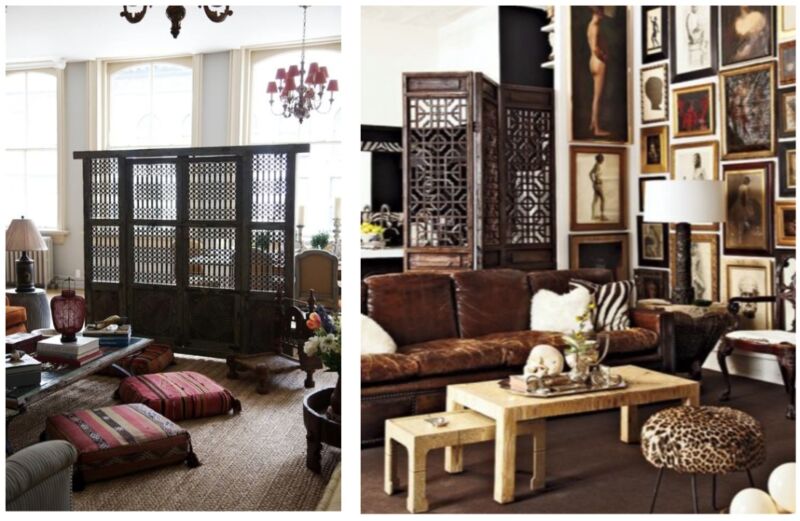
Effortless zoning without renovating
Whether you’re looking to section off areas or define new ones, antique screens offer endless possibilities:
- Create reading nooks or meditation corners in unused spaces.
- Shielding home offices from dining or living areas.
- Hiding clutter in bedrooms or behind doors.
- Transforming corners into dressing areas or makeup stations.
Perfect for renters and transitional living
Antique screens are an ideal choice when:
- You can’t build walls or install permanent dividers.
- You frequently change up your space for new needs
- You’re living in a rental or temporary setting.
- You want flexibility without sacrificing beauty.
Style meets privacy in open-plan spaces
Screens bring subtle elegance and privacy to open-plan interiors by:
- Separating areas without blocking light or airflow.
- Maintaining visual cohesion while defining boundaries.
- Adding an eye-catching focal point that doubles as décor.
Your space, instantly transformed
Use antique screens to create areas for:
- Remote work: Add a polished background for Zoom calls.
- Meditation or yoga: Carve out a peaceful, distraction-free retreat.
- Dressing areas: Separate your wardrobe space without heavy installations.
- Gallery walls: Display beautiful craftsmanship, like framed artwork.
Steeped in cultural significance, blending in where needed, and standing out where wanted, decorative wooden screens are go-to solutions for designers and homeowners who want to add functional dimension and artistry.
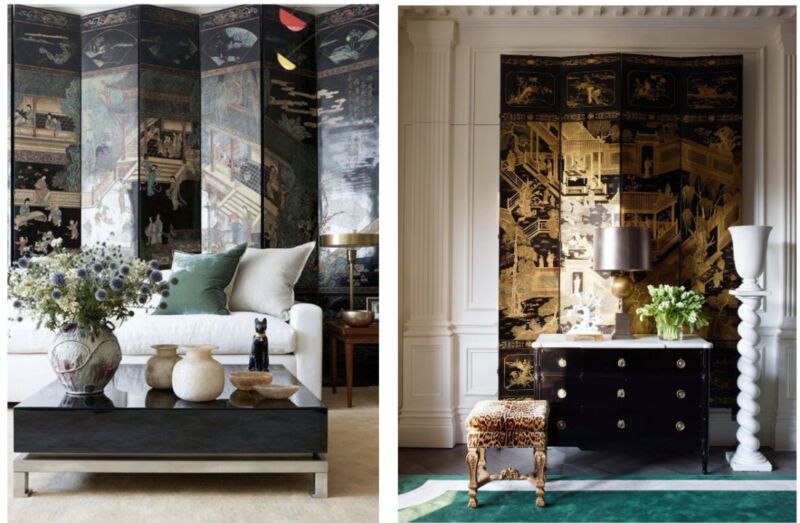
What makes antique screens irresistible in contemporary spaces?
Not all décor elements age gracefully, but antique screens seem to get better with time. Their tactile surfaces, intricate detailing, and sheer functionality result in a blend of old-world charm and modern sensibility.
Craftsmanship and artistry
Handcrafted by master artisans, antique screens boast intricate details, carvings, paintings, and historical motifs. Hand-lacquered Chinoiserie and delicately embroidered silk panels all tell a story.
Owning such a piece is like holding a fragment of art history right in your living room. This level of detail simply doesn’t exist in most contemporary furniture.
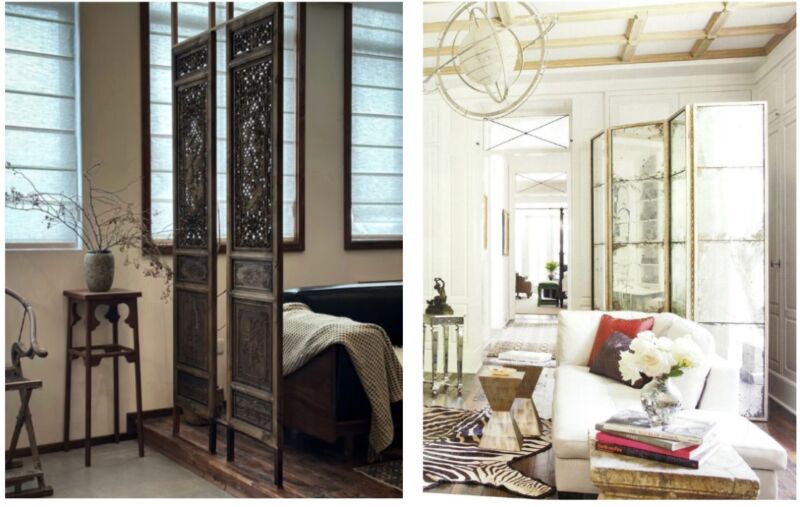
Sustainability and upcycling appeal
With growing awareness of environmental issues, antique furnishings are now a mark of conscious design. A single antique screen can prevent the need for costly renovations while adding a depth of texture and history that new furniture just can’t match.
Antique pieces offer an ethical alternative to fast furniture. By incorporating these screens into your home, you’re adding a touch of elegance and also reducing waste. They’re screens are built to last, and when restored properly, can serve generations to come.
Additionally, they align perfectly with the broader trend of upcycling, where designers give old items a new purpose. An antique screen might become a stunning headboard, a gallery backdrop, or even a wall-mounted art piece. The creative potential is endless.
Authenticity
Antique screens are one-of-a-kind, and their patina, imperfections, and textures create spaces that feel authentic and lived-in. Whether you’re styling a modern loft or curating a French-style aesthetic, a well-placed screen instantly raises the visual interest and depth of your interior.
You may be drawn to their heritage, their artistry, or their adaptability, but one thing is clear: antique screens are no longer just relics of the past. They’re statement pieces that deserve a spot in any contemporary home.
Looking to add one to your space?

